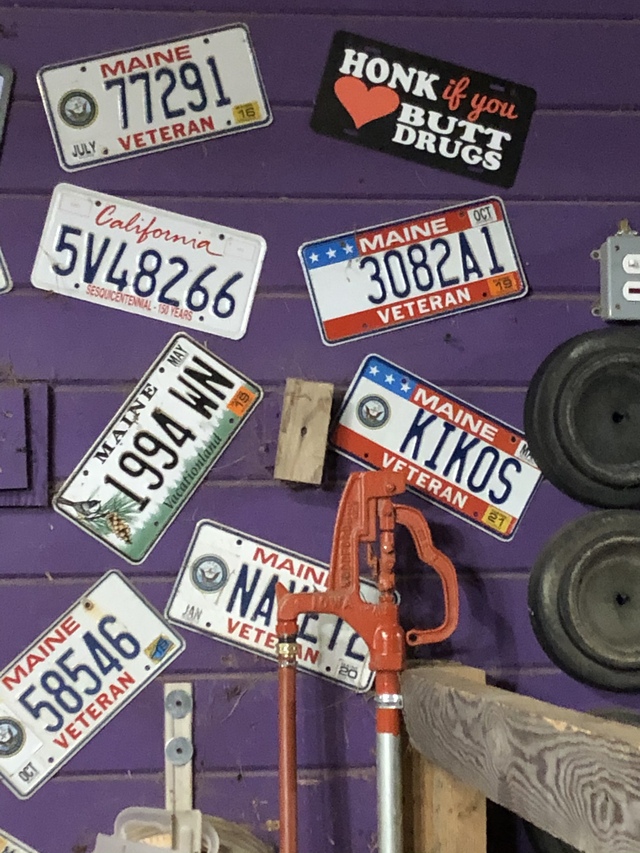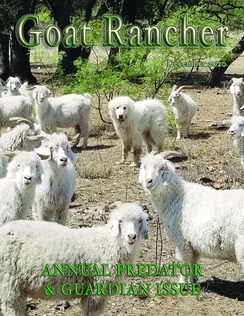Keeping the water flowing can be difficult in Northern Maine
Tuesday, December 1, 2020
As many of our readers have come to know over the last year or two, we live in New England, specifically Northern Maine. Often we are asked, especially by our fellow southern goat producers, what winter operations are like this far north? Or they crow, something like there is no way I would be a producer in the North! In many ways, it is much the same as it is in other parts of the world, just a heck of a lot colder. This means we need to take a few extra precautions to be successful, as well as make chores as efficient as possible. No one wants to be outside in frigid weather any longer than need be. This article will be the first in a three-part series, over the next year, specifically focused on winter operations, including winter water, shelter, and forage.
As I sit down to work on this first article in the series, on water, one of the critical components for survival, winter is quickly approaching all across North America. In Maine, we’ve had a mild fall so far but like many regions, it won’t last. In Maine, the saying goes something like; you prep for winter 12 months out of the year. I’ve found it isn’t as miserable as some make it out to be. However, I have to admit it is humid here so we get much wetter snow compared to other parts of the world, so cleanup can be a pain that makes winter operations that much more cumbersome.
Our acreage, homestead, farm, or ranch, whatever you prefer, wasn't always used for cattle, goats, or livestock. That being said, it wasn’t ready for watering goats the first winter. Winter water on our acreage has evolved over a period of time. We started out working harder than we needed but we all have to start somewhere. My hope is that by sharing, those that are just starting out won’t make the same mistakes we made and those that have been at it for years might pick up something new to try. There is something always new to learn, myself included. As a level set, so that readers have a better sense of the size of our operation, we typically winter over about 20 goats. More than that and we spend too much time outside. Less than that and I don’t have quite enough kids the following spring for genetic improvement of the herd.
In our first couple of years, we used heavy rubber electric heated buckets and carried water from the corner of the house to the barn about 150 feet away. Doesn’t sound overly unreasonable and some might say “that’s what we do today”. For us, however, there were a few reasons this just wasn’t the right approach for us. First, heated buckets can be dangerous. The bucket ends up empty from being dumped or slurped to the bottom and it might start a fire. The cord gets chewed or frayed, it might start a fire. Maybe even more important, the buckets just don’t last so you are reinvesting every year. In our experience, the power cords at the base of the bucket don’t last but one season in the frigid cold. Just too brittle, so not cost-effective, or maybe better said, a pretty low return on investment. Let’s add of course the increased electric bill and the water still ends up freezing even in the heated bucket. And then of course carrying enough 5-gallon buckets of water day and night to 20 waiting goats, well that adds up quickly over a 5-6 month period and just isn’t efficient. If you are trying to maintain an off-grid approach, or in our case, a goal around how much time you spend doing chores each day, especially in the dead of winter, this isn’t the right approach.
Our next step in the process, some might laugh at, but again all things must evolve, we ran a garden hose from the corner of the house to the barn and literally disconnected and drained it after each use to make sure it wouldn’t freeze overnight. Believe it or not, this worked relatively well and definitely saved on lugging 5-gallon buckets of water, “uphill both ways: each night and morning.” The hose froze solid on us a few times over the couple of winters we took this approach but again, it got the job done.
At the same time we transitioned to the hose, we also invested in an insulated bucket approach, manufactured by High Country Plastics. The system uses 5-gallon buckets, so should it freeze and split the buckets are readily replaceable. The insulated bucket is marketed specifically for horses but works fabulously for goats. You can also put 3- or 4-gallon buckets in the insulated housing if you prefer a shallow bucket for kids or smaller doelings or bucklings. The housing uses thick insulation and can also double as a reservoir for water. The housing has a threaded plug in the bottom that can be removed for cleaning. The bucket also uses a plastic float that allows livestock to nudge it, which permits the circulation of the water as well as adding a bit of insulation to the surface of the water. Tested at as low as 15? by the manufacturer, we have seen it work at even lower temperatures. Of course, conditions have to be just right but these buckets and the housing have lasted us for years, unlike the heated bucket approach. After the initial investment which is approximately the same cost as heated buckets, the return on investment remains high as the buckets and housing don’t require replacement year after year.
About the same time as the hose and insulated bucket approach was implemented we also replumbed our cold water outlet with hot water. I put in a set of valves so I can switch back and forth as needed for that particular line that feeds the spigot we use for hauling water to the barn or using the hose approach. First, it makes the water in the insulated buckets less likely to freeze overnight when the herd is less active and second the goats love the warm water. My wife Kathy, calls it tea time. The goats go crazy over fresh warm water while we are completing chores. They slurp it down like they haven’t drunk in days. In the morning, when the water is low in many of the buckets, we combine the water into one bucket. Aside from topping off the buckets from combining, this has one additional benefit. It forces us to replace their water each evening so that they always have a fresh clean supply. We also hang a scoop on the barn nearby so we can strain the large contaminants from the water buckets in the morning or whenever needed to keep the water just a little cleaner. Unlike the common misconception, goats don’t eat everything and they do like clean water.
The last evolution, at least to this point, was to install a yard hydrant as part of one of my summer projects. My wife is always telling me to stop dreaming up new projects. Of course, any project where I can use the tractor and backhoe allows me to increase my return on investment. My response is always I am just refining, trying to make our operation run as smoothly and efficiently as possible. She throws the glance or rolls the eyeball and I go about dreaming up new projects. No one wants to be outside for any length of time when it’s below freezing, let alone be out there at 0? or at -10? or -20?. And I know it gets even colder in other parts of the country. And even colder when you add the wind chill.
Yard hydrants can be purchased from an assortment of retailers, including Home Depot, Lowes, and Amazon. They come in a variety of lengths and provide a means to access water in the winter without pipes freezing. I have seen yard hydrants installed on farms, at agricultural fairs, and sale barns. For a yard hydrant to work correctly, it must be buried below the frost line so that when the hydrant is closed the pipe can drain either to a stone or rock drain field. In essence, when you close the handle at the top of the hydrant, it closes the valve at the base of the hydrant below the frost line. In my situation, it needs to drain through a pipe that is downslope from the hydrant where the water can exit away from the yard hydrant. Our farm sits directly on a pocket of ledge or bedrock that often is only about 6” below the surface. This doesn’t allow the yard hydrant water supply pipes to be buried below the frost line. So we took a few extra precautions including insulating the pipe and in this case running a backup line should I have problems with the mainline that may arise. I believe in backups and in this case, I use the backup pipe as a conduit for my CAT5 networking cable so that I have Internet at the barn to run my router and barn cameras (maybe an article for another day).
Our method has evolved to meet our specific needs; herd size, our issues with ledge or bedrock so close to the surface of the ground, and our specific goals. We’ve considered automatic insulated waterers as the next evolution to decrease our time doing chores or being outside. We’ve heard that some producers in the industry have even purchased automatic insulated waterers through approved grants so not even a dime of out of pocket expense. There is always an opportunity to refine and improve or as my wife says, dream up new projects to keep us busy.
(Josh and Kathy Crise, and their grown children, Amelia and Kevin, operate Marble Creek Acres in Lee, Maine. For interest in a future year’s Kiko waitlist, questions, or if you have topics you might like to read about in a future Goat Rancher, we can be reached at 207-619-3758, email [email protected] or mainekikos.com)



